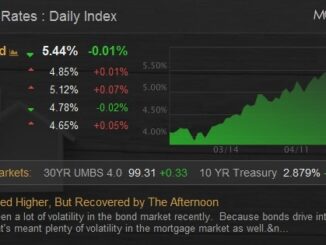With mortgage rates currently at 7.04%, many first-time homebuyers – typically millennials – will be forced to continue to rent.
But the U.S. housing market is not a monolith, so today we’re going to look at some markets where affordability is within the normal renter’s reach.
In a study published this week, First American economist Ksenia Potapov analyzed the share of homes that are affordable to the median renter in any given market. She defined an affordable market as one in which the median renter can afford 50% or more of the homes for sale based on the renter’s household income, the prevailing 30-year mortgage rate, and the assumption that one-third of pre-tax income is used for a mortgage with a 5% down payment.
Here’s what she found:
There are only four markets in the U.S. in which the median renter in that market could afford half or more of the homes – Buffalo (59%), Pittsburgh (56%), Detroit (54%) and Cleveland (54%).
Meanwhile, the least affordable markets were Los Angeles (1%), San Diego (2%), San Francisco (2%), Salt Lake City (4%), and San Jose, Calif. (4%). The California cities are stalwarts on lists such as these, but Salt Lake City — which attracted tech workers during the pandemic — is a new entrant.
“Pre-pandemic, Salt Lake City was an affordable market that fell in the middle of the pack out of the top 50 U.S. markets,” Potapov wrote. “However, rapid house price appreciation during the pandemic dragged Salt Lake City near the bottom of the affordability list. In the fourth quarter of 2019, the median renter could afford 69% of the homes for sale in Salt Lake City. Now, the median renter can only afford 4% of homes.”
According to data from Altos Research, the median home price listed in Salt Lake City last week climbed to $785,000, up from about $540,000 in the fourth quarter of 2019.
Jake from State Farm to California: Drop dead!
California markets like the ones listed above already face a number of challenges, but news over the weekend could make it even more challenging for buyers. Last week we talked about the cost of flood insurance going up by over 200% for some homeowners in the Southeast as both the federal government and private insurers determine how to price the soaring cost of climate risk, or abandon insuring them altogether.
Well, State Farm last week announced that it would halt home insurance sales in California. State Farm is the nation’s largest car and home insurer by premium volume. The insurance giant said it “made this decision due to historic increases in construction costs outpacing inflation, rapidly growing catastrophe exposure, and a challenging reinsurance market.” Existing home-insurance policyholders won’t be affected, though this is clearly not a positive development for the state.
You might remember that a year ago, AIG notified 9,000 wealthy clients that it wouldn’t renew home insurance policies in California. The change was part of a plan by AIG to stop selling home policies in California through a unit regulated by the state’s insurance department. Policyholders were instead directed to another unit, where policies could cost three-to-five times higher than what clients paid under the old plan, with less-generous coverage to boot.
California has experienced record wildfires in the past six years. The state experienced eight of the largest fires in U.S. history and three of the top five deadliest fires.
I am not sure if we should even get into the reconstruction costs in California, which are so high they are almost beyond belief.
What does this all mean for Californians? For starters, I expect that other insurance companies are going to follow suit and availability is going to be a serious problem for homeowners and prove a problem for buyers and sellers alike. As is true in Florida, California has an insurer of last resort — FAIR Plan — for wildfires, but homeowners will still need significant wrap-around coverage. The premiums are quite high under FAIR, too and they cover the dwelling at actual cash value versus replacement cost value.
Cali LOs and agents: Have you had any deals held up because of home insurance issues? Let me know at james@hwmedia.com.
In our weekly DataDigest newsletter, HW Media Managing Editor James Kleimann breaks down the biggest stories in housing through a data lens. Sign up here! Have a subject in mind? Email him at james@hwmedia.com.



